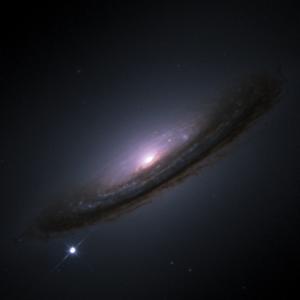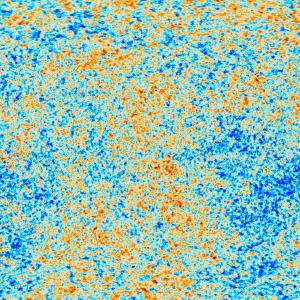Blog
The Sound of Darkness
5 June 2020
 Seshadri Nadathur
Seshadri NadathurIn the standard model of cosmology, dark energy fills the universe. It causes the universe to expand at an ever-increasing rate, and it makes up more than 70% of the cosmos. But there’s a problem. When we measure the rate of cosmic expansion in different ways, we get results that disagree with each other.
 NASA/ESA, The Hubble Key Project Team and The High-Z Supernova Search Team
NASA/ESA, The Hubble Key Project Team and The High-Z Supernova Search TeamThere are several ways to measure cosmic expansion. One is to measure the relative motion of distant galaxies. This is done by looking at the light from supernovae within these galaxies. Type Ia supernovae have a fairly uniform standard brightness, so by measuring their observed brightness we know the distance of their home galaxy. This can be compared with the observed redshift of the galaxy to determine the Hubble parameter. It is this method that first discovered cosmic expansion was accelerating.
 ESA and the Planck Collaboration
ESA and the Planck CollaborationAnother method is to look at the cosmic microwave background. While this faint afterglow of the big bang has an almost uniform temperature of about 3 K, there are small variations in temperature across different regions of the sky. The scale of these fluctuations depends upon the rate of cosmic expansion. Careful observations from the Planck spacecraft have given us a good measure of the Hubble constant. And this is completely independent of the supernova measure. In principle, these two results should agree, but they don’t.
The Planck results give a Hubble parameter of about 67 – 68 (km/s)/Mpc, while supernova observations give a value of about 71 – 75 (km/s)/Mpc. It used to be that the uncertainty of these measures was large enough that they overlapped, but they are now so precise that they outright disagree. This doesn’t mean that dark energy is wrong, but it does mean there are things we don’t understand about it.
One of the difficulties with these results is that they are model dependent. Each depends on certain assumptions about the universe. One of these is that the universe is spatially flat. In other words, the light we see from distant galaxies has traveled in basically a straight line. It isn’t deformed by some overall cosmic warping of space. But there is some evidence in the Planck data that space might have a small overall curvature. This would help account for the difference in results.
 Jeremy Tinker and the SDSS-III collaboration
Jeremy Tinker and the SDSS-III collaborationTo settle the issue, astronomers have looked at other ways to measure cosmic expansion. One way is to measure how galaxies cluster at large scales. Galaxies clusters have formed because of small variations in the density of the early universe known as Baryon Acoustic Oscillations (BAO). As gravity tries to pull galaxies closer together, dark energy tries to drive them apart. As a result, galaxies have formed into dense superclusters separated by large voids. The size of these voids allows us to measure the Hubble parameter.
Recently, a team made the most comprehensive measure of galaxy clustering.1 They found several interesting things. To begin with, since the structure of the voids depends on both dark energy and the overall shape of space, the team confirmed that the universe is spatially flat. Cosmic curvature can’t account for the different values. For the Hubble parameter, they got a result of about 70 – 74 (km/s)/Mpc, which agrees with the larger supernova result. But their observations focused mainly on galaxies with a redshift of z < 2, or within about 9 billion light-years. When the team added data from more distant galaxies, their result shifted to 68 – 70 (km/s)/Mpc, which better agrees with the Plank result.
The upshot of all this is that the universe is flat, dark energy is very real, and there is an oddness to it we still don’t understand.
Seshadri Nadathur, et al. “Testing Low-Redshift Cosmic Acceleration with Large-Scale Structure.” Physical Review Letters 124 (2020): 221301. ↩︎